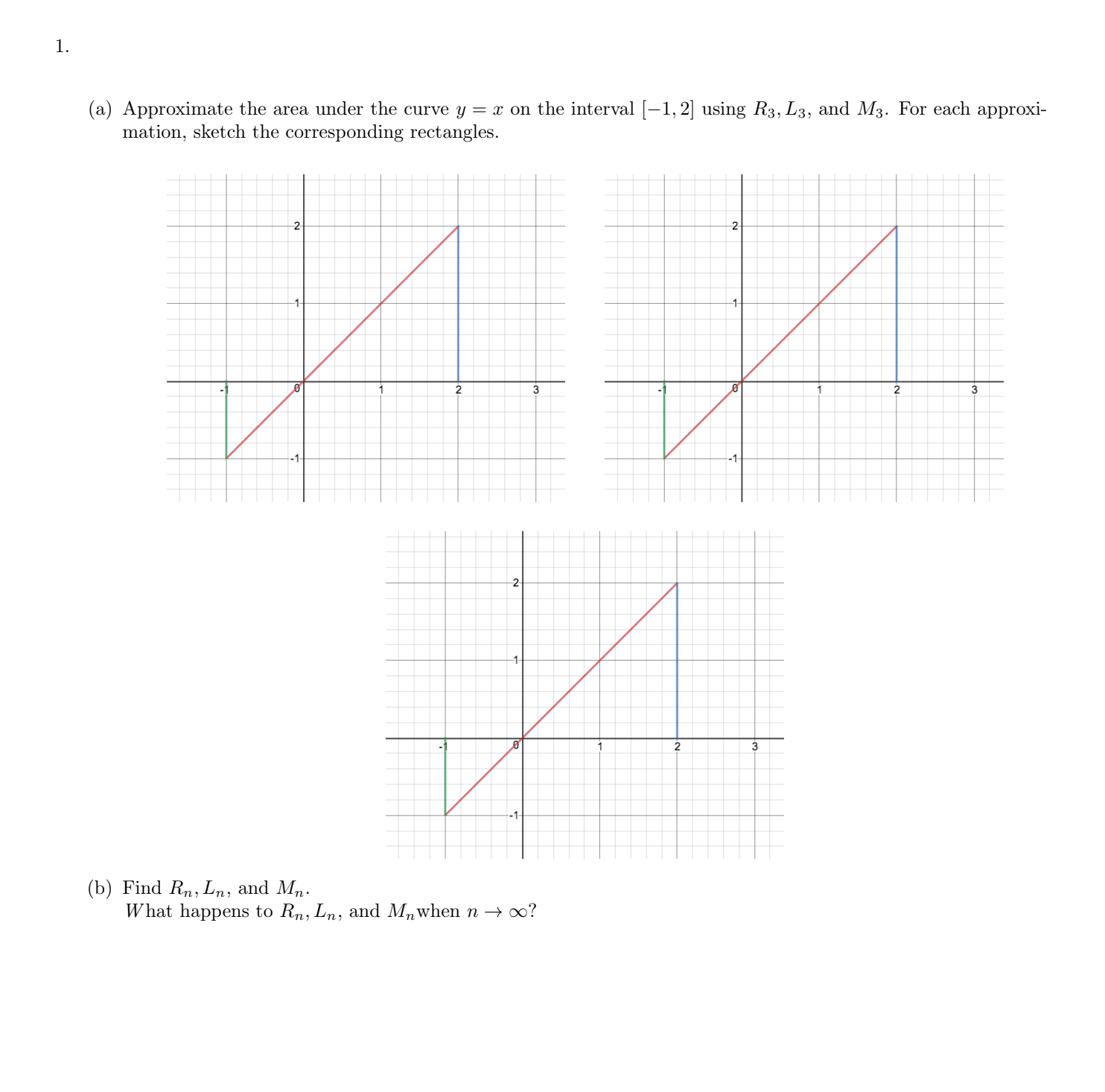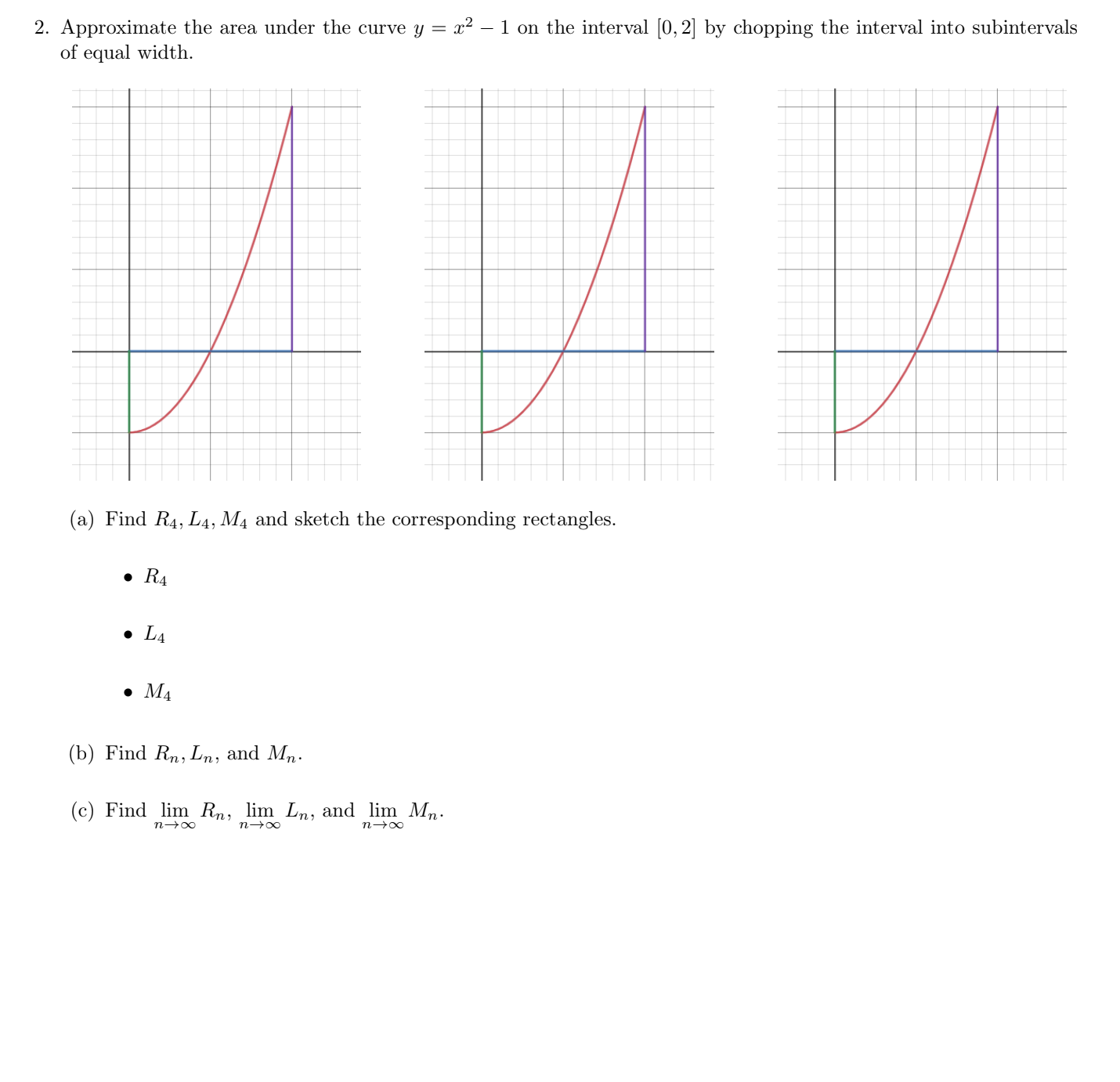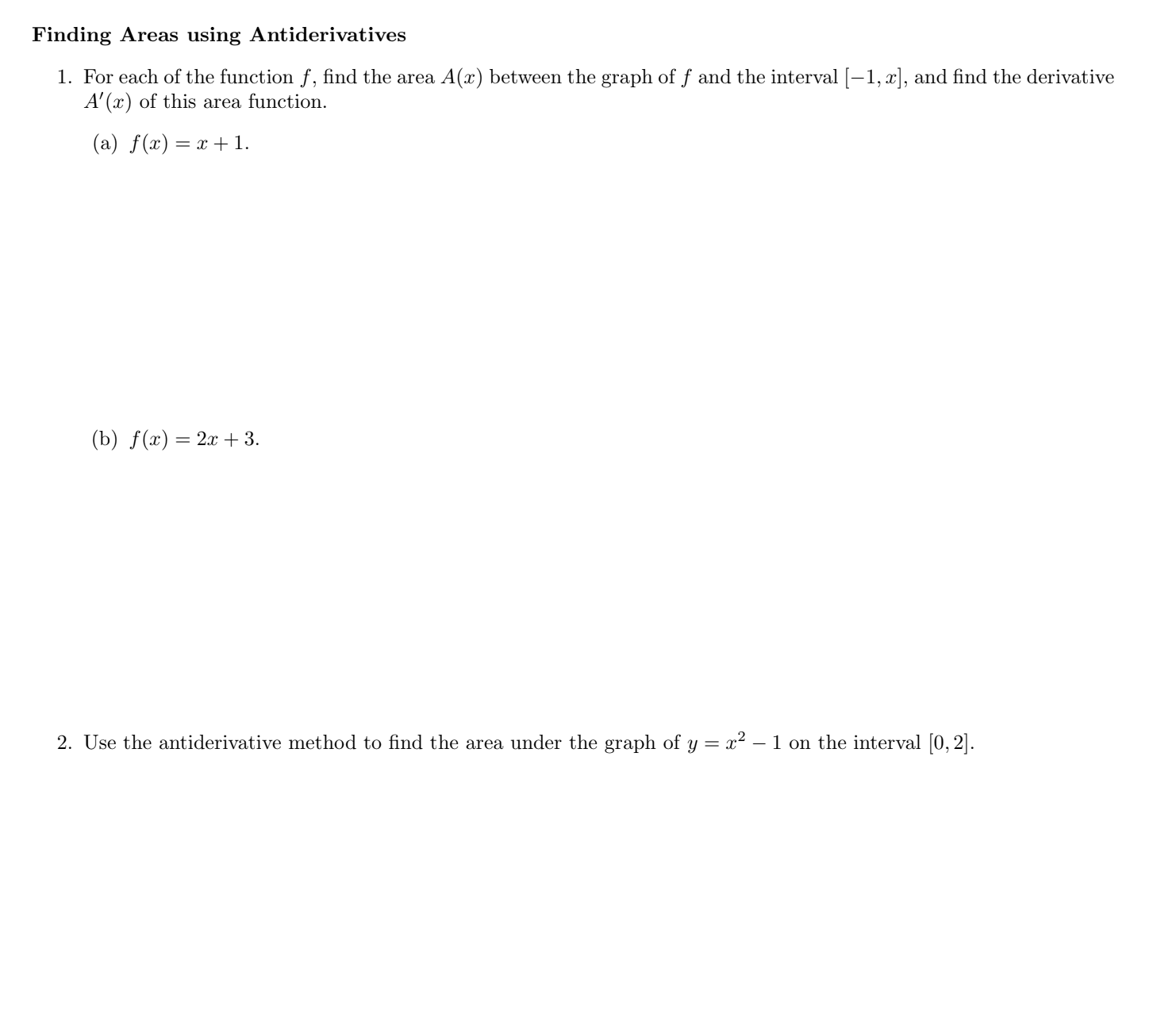Answered step by step
Verified Expert Solution
Question
1 Approved Answer
1. (a) Approximate the area under the curve y = x on the interval [1, 2] using R3, L3, and M3. For each approxi-



1. (a) Approximate the area under the curve y = x on the interval [1, 2] using R3, L3, and M3. For each approxi- mation, sketch the corresponding rectangles. 2 1 2 2- 3 (b) Find Rn, Ln, and Mn. What happens to Rn, Ln, and Mwhen n ? 2 2 -1- 3 2 2. Approximate the area under the curve y = x - 1 on the interval [0, 2] by chopping the interval into subintervals of equal width. VVV (a) Find R, L4, M4 and sketch the corresponding rectangles. R L4 M4 (b) Find Rn, Ln, and Mn. (c) Find lim Rn, lim Ln, and lim Mn. n n n Finding Areas using Antiderivatives 1. For each of the function f, find the area A(x) between the graph of f and the interval [-1, x], and find the derivative A'(x) of this area function. (a) f(x) = x + 1. (b) f(x) = 2x + 3. 2. Use the antiderivative method to find the area under the graph of y = x - 1 on the interval [0,2].
Step by Step Solution
There are 3 Steps involved in it
Step: 1

Get Instant Access to Expert-Tailored Solutions
See step-by-step solutions with expert insights and AI powered tools for academic success
Step: 2

Step: 3

Ace Your Homework with AI
Get the answers you need in no time with our AI-driven, step-by-step assistance
Get Started


